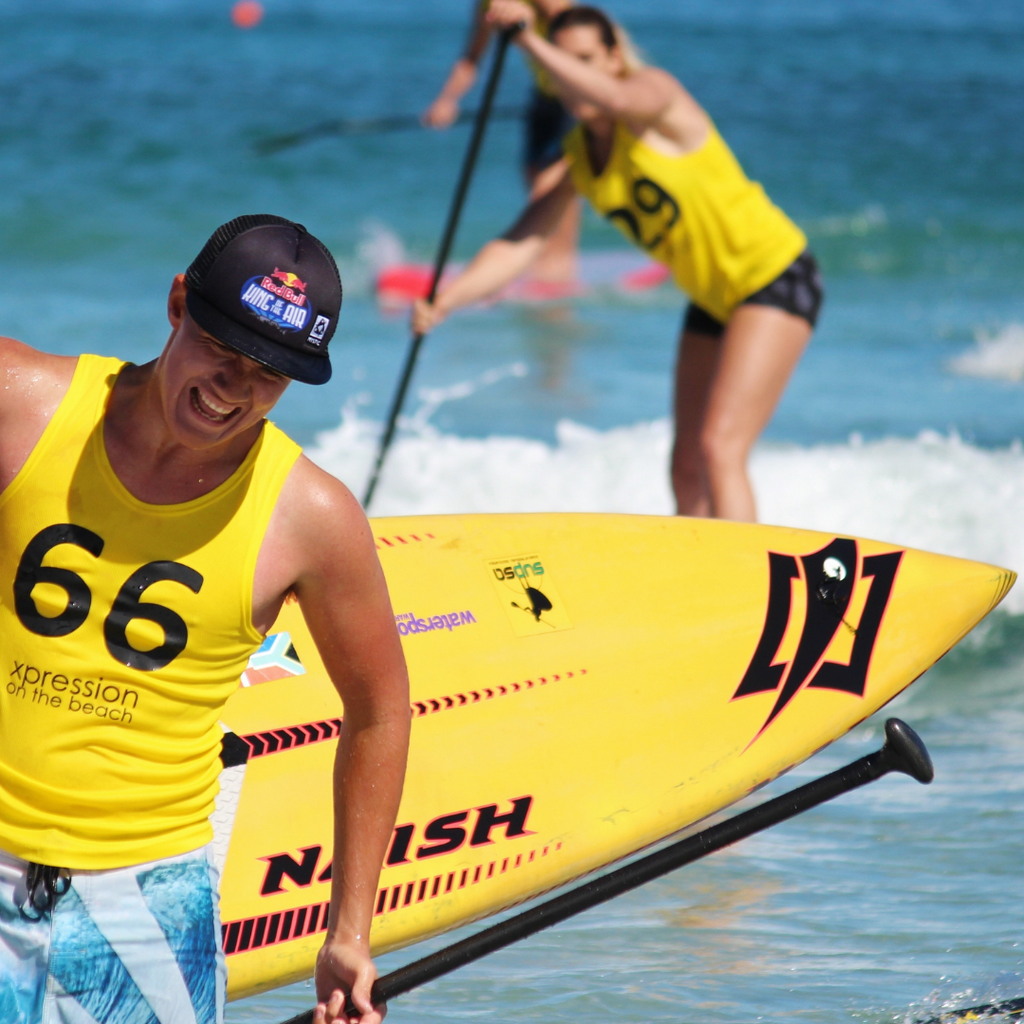Leash Options for SUP
Leash options for SUP?
In today's article, we look at the benefits or limitations of each method which is perfect for those starting out and want to learn about reducing risk and keeping yourself safe while on the water.
Generally, there are two types of leash which are Coil and Straight and then typically there are three leash locations for wearing which are Ankle, Calf, and Waist. The good news is the SUP Wales team can break each down for you, do read on...
Ankle
Typically all inflatable SUPs or composite hardboards come from the manufacturer with some form of Leash which is in effect a bungee string that sits between yourself and the Stand Up Paddleboard.
The leash is fixed to the board via D-Ring which is normally a piece of metal located to the back of the board in a D shape.

The leash mechanism to help you recover should you come away from your board.
The attachment to a person is placed on the less dominant foot, this is otherwise known as a Surf Stance. A good exercise to determine which foot this might is to have a friend or family push you gently from behind, the foot that doesn't break your motion or fall is the leg for the leash. Furthermore, while adapting this approach the leash won't hinder maneuvers as it's conveniently placed on the back ankle and out of harm's way when surfing.
 A straight leash in terms of the wire between the bracelet and D-Ring is generally better for SUP Surf.
A straight leash in terms of the wire between the bracelet and D-Ring is generally better for SUP Surf.
Calf
A second option for a Stand Up Paddler with a bracelet leash would be on the back of the calf muscle meaning the leash would sit higher than on your ankle and hold a slightly bigger loop appropriate for the calf muscle. Ultimately, you need to find what works for you within a paddling environment as you might find the leash is uncomfortable on the ankle, or when you fall off it hurts when the board travels through the wave yanking your ankle to the point of pain. We highly recommend the calf is a better option in this circumstance to help reduce the length of the leash that might drag on the board preventing entanglement. You'll find that SUP Racers opt for this positioning of leash as it help with any hindrance that the leash might cause.

Waist
Otherwise known as a Quick-Release Belt, or a get out of jail free card as often referred to. This handy safety product is geared towards the Slow Moving Canal/River environment or fast White Water Rapids as it allows the paddler to remove themselves from any dangers such as debris that could exist within the river depths.

We think our SUP Wales Mascot Dai the Dragon sums this up nicely with our infographic below:

To summarise, we recommend that if you are paddling solo on a River Environment or Canal that a Quick Release Belt is worn at all times while on the water as a vitally important piece of safety kit.
If you don't have one, and you plan paddling alone, items can be picked up online for around £10-£30 and could be used to save your life one day. Be Safe, SUP Smart!
#SUPSafety #SUPLeashes #SUPWales #SUPSmart #SUPWalesOfficial

